"I conclude, therefore, that this star is not some kind of comet or a fiery meteor... but that it is a star shining in the firmament itself one that has never previously been seen before our time, in any age since the beginning of the world." -Tycho Brahe
I want to take you back in history, back to the middle of the 1500s. Night skies were spectacular, even from the world's most cosmopolitan cities, and thousands of stars consistently graced the sky, sights only visible from a few select locations in the world these days.
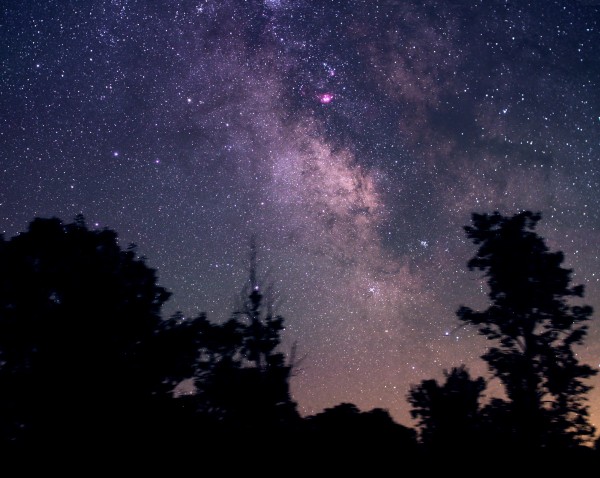 Image credit: Lennox & Addington County Dark Sky Viewing Area, via http://tamworth.ca/.
Image credit: Lennox & Addington County Dark Sky Viewing Area, via http://tamworth.ca/.
The positions, brightnesses and colors of each hitherto known star in the sky -- including all the nebulous and fuzzy objects visible to the naked eye -- were unchanged throughout the nights, years and centuries. Only the Moon and the five planets (Mercury, Venus, Mars, Jupiter and Saturn) changed their positions over time, relative to the fixed stellar-and-cosmic backdrop.
 Image credit: Tunc Tezel of TWAN, via http://www.twanight.org/Tezel.
Image credit: Tunc Tezel of TWAN, via http://www.twanight.org/Tezel.
The motion of these wanderers through the night sky, along with eclipses and the orbits and appearances of comets, were the primary concerns of astronomers of that time. In particular, Copernicus' (posthumous) publication of his heliocentric model posed an interesting and controversial alternative to the favored Ptolemaic model, which had stood for more than a millennium.
But on this very night -- November 6th -- some 441 years ago, something changed in the night sky that had never been recorded (in the Western Hemisphere) before: a new star appeared!
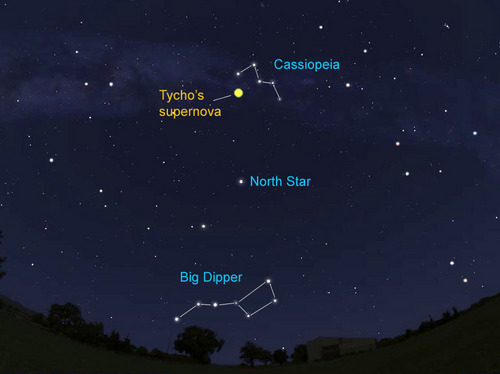 Image credit: Bob King (Astro Bob) of http://astrobob.areavoices.com/.
Image credit: Bob King (Astro Bob) of http://astrobob.areavoices.com/.
Not only did it appear on November 6th, but it continued to brighten, eventually outshining all the other stars and planets in the sky and becoming visible in the daytime, before fading away from view over the span of two years. Tycho Brahe, the greatest naked-eye astronomer of all-time, noticed it that very first night. Looking back on it, he recalled,
When, according to habit, I was contemplating the stars in a clear sky, I noticed a new and unusual star, surpassing the other stars in brilliancy. There had never before been any star in that place in the sky.
He called it a "Stella Nova," latin for new star.
For the first time, there was concrete evidence of the following:
- The stars were not fixed, eternal and constant.
- New stars could (apparently) be created. And finally...
- Stars can (apparently) go away, too.
The most eternal things in all of human experience weren't eternal, after all. And nearly four centuries after Tycho's supernova first appeared, we discovered it all over again.
There's nothing like this in the visible part of the spectrum, of course, but when we turned our eyes towards the sky in radio frequencies (in 1952), the evidence was still there. What we found was a remnant from a long-gone star that had gone supernova some four centuries earlier.
And it isn't just in the radio that the evidence shows itself.
In the far infrared, the warm gas blown spherically outward from this catastrophic stellar death is still visible, glowing at around 40 Kelvin.
You might take a look at the higher energies, too, and see if anything interesting showed up! We know that in many supernova explosions, the core can collapse down to form either a neutron star or a black hole, and in high energies (like X-rays), that would show up!
Nothing! No central object, no extra high-energy sources at all.
This was no core-collapse (or Type II) supernova; this was a Type Ia, where a white dwarf star accrued enough mass that its degenerate core became unable to press back against the force of gravity, began to collapse, and initiated a runaway fusion reaction that destroyed the entire star! There's no collapsed object at the center, just high-energy material strewn about through the surrounding space.
X-ray imaging exposes this high-temperature gas, and spectroscopic imaging confirms for us what we suspect about objects such as this: the strong presence of heavy elements!
Even the highest energy radiation in the Universe -- the gamma rays -- get in on the action, and continue to shine brightly more than 400 years later.
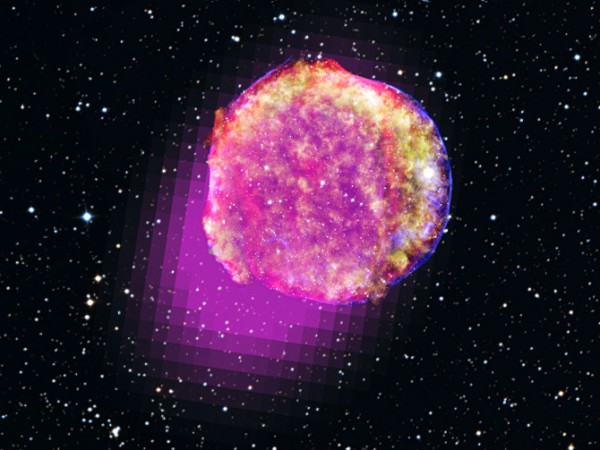 Image credit: Gamma ray, NASA/DOE/Fermi LAT Collaboration; X-ray, NASA/CXC/SAO; Infrared, NASA/JPL-Caltech; Optical, MPIA, Calar Alto, O. Krause et al. and DSS.
Image credit: Gamma ray, NASA/DOE/Fermi LAT Collaboration; X-ray, NASA/CXC/SAO; Infrared, NASA/JPL-Caltech; Optical, MPIA, Calar Alto, O. Krause et al. and DSS.
But white dwarf stars don't just "go supernova" on their own; they'd be eternally stable unless something were happening to increase their mass over time. There could have been a companion star to the one that went supernova in 1572, one that had mass siphoned from it onto the onetime white dwarf. Finding the center of the explosion was a challenge, but we have, in fact, been able to locate exactly where it took place.
Want to know if anything's there?
A G-class star -- the same class as our own -- is still there. Hundreds of years ago, this star was probably having mass siphoned off of it and onto its denser companion, when finally enough mass was accrued that the white dwarf became unstable, and a supernova ensued!
The star has moved by 2.6" (or about one-1,500th of a degree) since the 1572 explosion, and is moving at a colossal 136 km/s relative to us, some three times the speed of all the other stars in its neighborhood. This star, more than any other, was given a boost (or a kick, if you prefer) by its onetime companion.
What remains now from that spectacular explosion is an expanding sphere of heavy elements, gas and dust, and a legacy that changed out understanding of the Universe forever.
In another few thousand years, all signs of an explosion will become invisible at all wavelengths, and eventually a fraction of these elements strewn into the Universe will make their way into future generations of stars and planets.
But that doesn't mean we'll never see the evidence from this star again!
You see, the light from that spectacular explosion moved spherically outwards, and in a few places in the surrounding interstellar medium, reflects off the gas-and-dust that's found in space. And these "light echoes" occasionally make their way to Earth, allowing us to observe the supernova over and over again, so long as there's enough dust at the right distance and angle to send it our way.
There have been -- and will be -- others, both in and beyond our galaxy since then, but if not for the supernova of 1572 (and a little later, the last naked-eye one, in 1604), it could have been a long, long time before the heavens held enough interest for us to look as deeply as we have.
Lucky us, for the Universe has been this way for all of human history, but on this night in 1572, our understanding of it began to change forever.

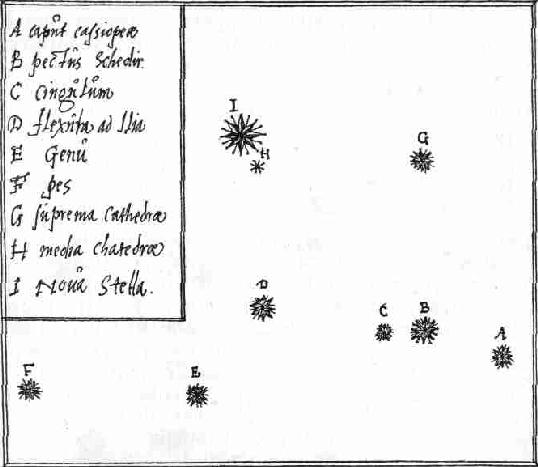
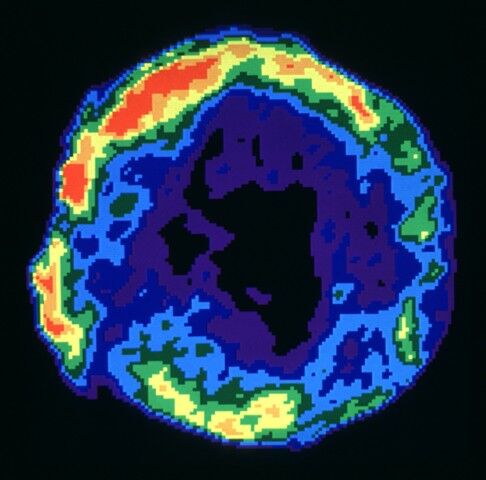
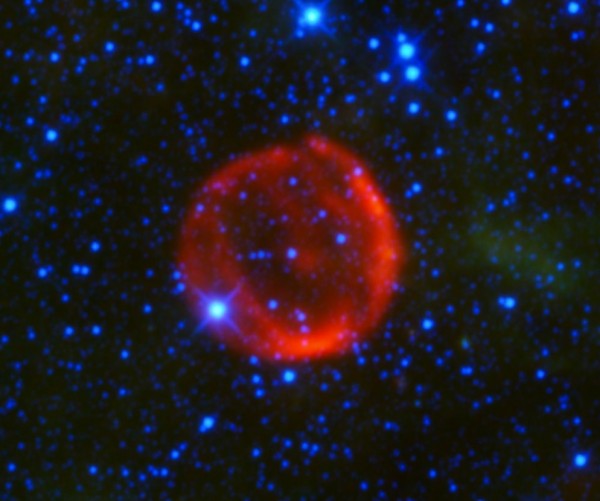
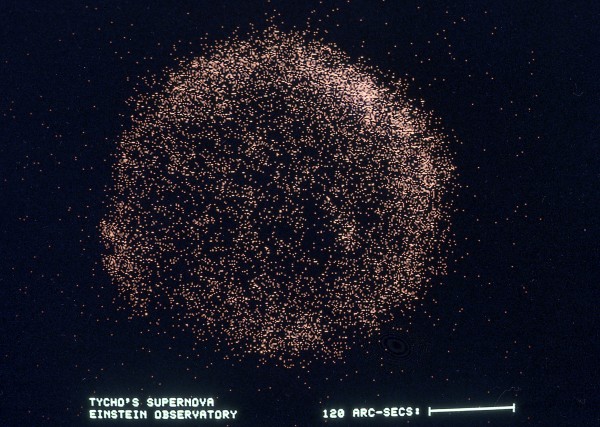
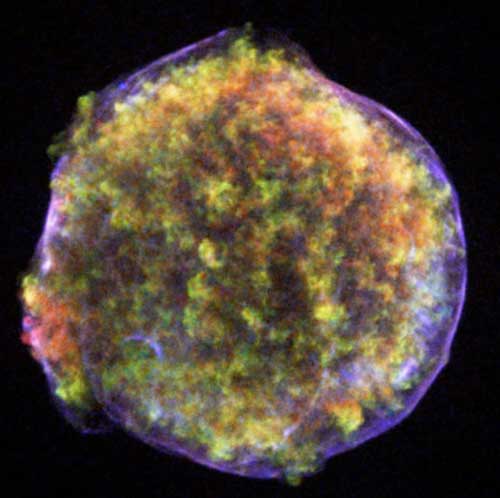
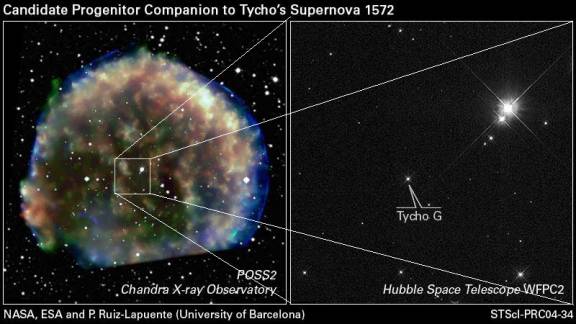
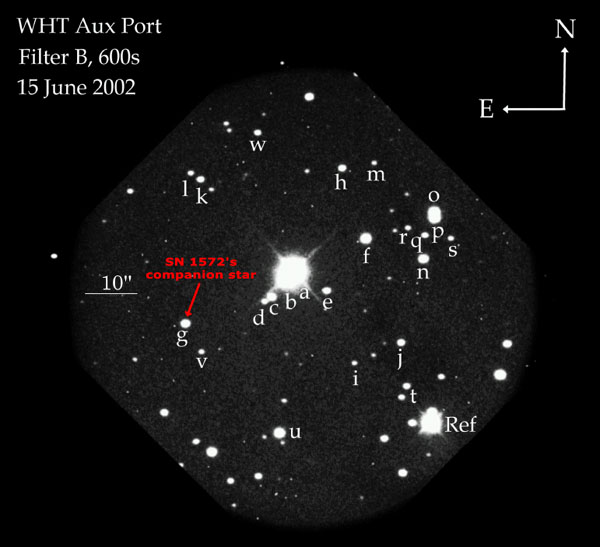
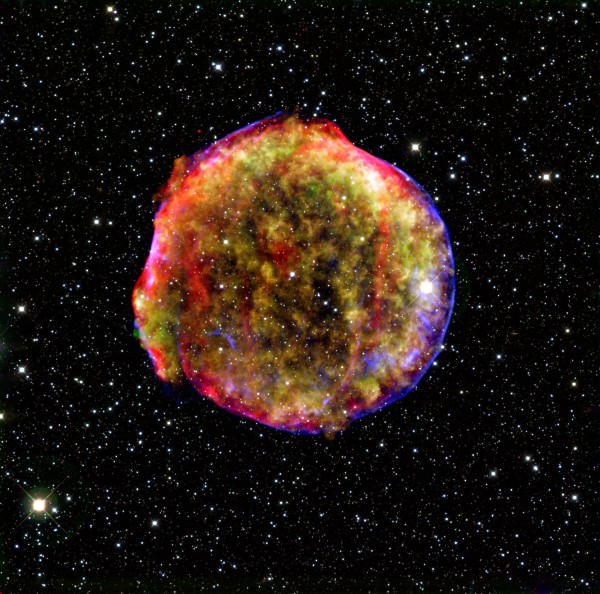
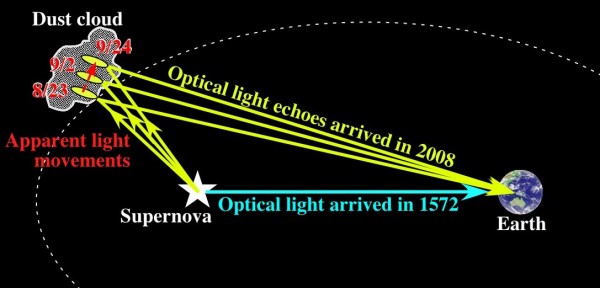
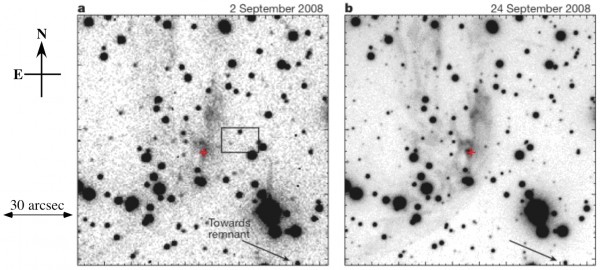
I'd be interested in knowing more about the cultural impacts of Tycho's Supernova, and if there are sufficient records from various parts of the world to assess how it affected different cultures.
---
Is there any estimate of the range of time it takes for dispersed heavy elements to condense and form planets? Or the number of stellar generations that might have elapsed from the Big Bang until the first planets could have been formed?
---
Re. the "increasingly rare" sight of the Milky Way and a sky full of stars: this suggests a project.
Amateur astronomers could equip themselves with battery-powered bullhorns, awaiting the next random local grid power outage. When the lights go out, they go outside and walk down the street, calling out to their neighbors through the bullhorn, "Come outside! Look at all the stars in the sky!"
For people who were born and raised in cities and suburbs with bad light pollution, going out and looking up during a blackout could get them interested in astronomy, space science in general, and for some people, possibly change their outlooks. All the better if their neighborhood astronomer was there to explain things and possibly set up a telescope for others to look at specific objects.
Nice article, Ethan!
May I make one and a half suggestions? Could you replace the phrase "Type I" with "Type Ia"? There are several sub-classes within Type I (Type Ib and Type Ic), only one of which has a white-dwarf progenitor.
Also, if it's possible -- and it may not be -- the two pictures which show Cassiopeia, one from a sky map and one from Tycho's journal, are rotated by about 180 degrees relative to each other. If they were shown with roughly the same orientation, it might be easier for readers to connect them.
Keep up the good work.
Michael,
I'll go halfsies with you. Type I is changed to Type Ia; I go back-and-forth because Type Ia and Type II are by far the two most common types I talk about here and I hate to bog people down with extraneous information when they don't need it (which is why I sometimes talk about asterisms as "constellations" even when I know it's technically wrong), but if I can teach people about the two types of "Type Ia" and "Type II" then that's both a very good thing and more accurate. So let's go with that.
But those two images of Cassiopeia show two different things: the first (Stellarium) shows the orientation of the Dipper, Polaris and Cassiopeia as they are after sunset at this time of year, while the second (Tycho's journal) shows exactly what Tycho drew. I could rotate either image to match the other, but if we can challenge people to delineate Type Ia from Type I, we can challenge them to use their spatial reasoning in this manner.
At least, that's what I think. :-)
Thanks for the catches and for the praise; you know I'll keep it up!
Re: G's comment (#3): this supernova was observed in Europe and in China and in Korea. You can read details in "The Historical Supernovae", by Clark and Stephenson. The only reference they provide to social reaction comes from Europe, and that is only among the educated elite.
By the way, Clark and Stephenson quote Tycho as writing that he did not see the new star on Nov 6, due to bad weather; he was able to glimpse it for the first time on Nov 11.
I really wanted to name my first son Tycho, but my wife nixed it due to pronunciation concerns. However, the story of his Brahe's somewhat ignominious demise didn't help convince her, either. http://www.huffingtonpost.com/2012/11/18/tycho-brahe-death-poison-bladd…
Man's understanding of the Universe has increased extremely rapidly in the last hundred years, or so, a very short time in the history of man, even in the 70 years of my own lifetime, but I expect we still have a long, long ways to go.
Re. Michael Richmond: Thanks for the book reference; I've copied it to my day-notes and will look for it.
I just today discovered "Starts with a Bang". It is great!
"The Night the Universe Changed" is missing an important element of Tycho as a scientist. Immediately upon seeing this new luminous object in the sky on November 11th 1572, he set about investigating what sort object it might be. In brief he determined two critical properties. The object was stationary relative to the other stars and it had no discernible parallax. Thus it had the properties of a star, namely it was stationary and much further away than the moon. It was these properties led him to call it "Stella Nova".
I forget to include a reference in my comment about Tycho as a scientist: "Tycho Brahe" by J. L. E Dryer 1890, p 38 ff
i have the feeling i'm missing something and maybe
am just too lost for you to help. still, if i could get an
answer from someone with enough knowledge to easily answer,
here's my question. Wasn't Tycho actually observing
not a new star but the exploding death of a white dwarf star?
which makes his discovery of the dynamic quality of the heavens
no less true, but coming from the opposite end of the birth-death
dynamic.
have i got it right or not? if so, i guess i've been thrown off by
the continuing strain of tycho's new star. let me know unless
i'm too lost to bother with.